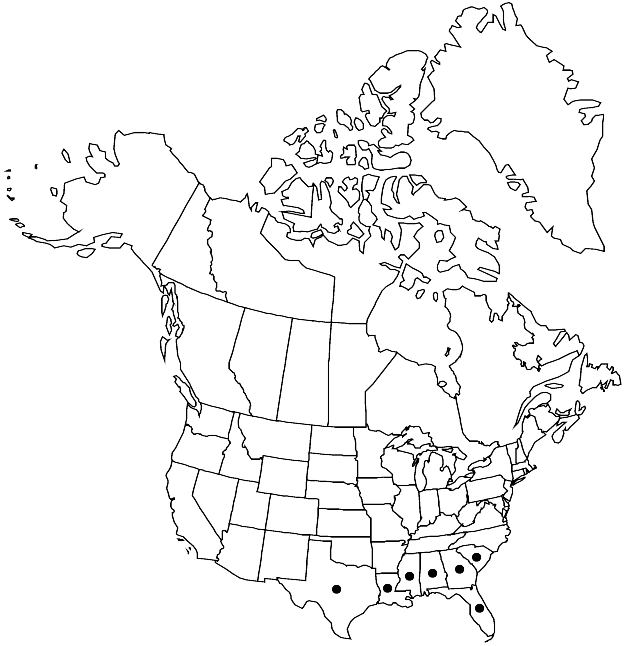Gemmabryum apiculatum
Phytologia 87: 65. 2005.
Plants small, green or yellow-green, often with pinkish tinge. Stems 0.4–2(–3) cm; rhizoids brown. Leaves imbricate to loosely set, broadly lanceolate to narrowly ovate, weakly concave, 0.4–1.5(–2) mm; base rarely weakly decurrent; margins plane to weakly revolute proximally, entire to serrulate distally, limbidium absent; apex acute; costa percurrent to short-excurrent, awn slender; alar cells quadrate, region differentiated; proximal laminal cells gradually rectangular, 2–4:1; medial and distal cells 60–100(–120) × 8–16(–20) µm, 6–8:1. Specialized asexual reproduction by rhizoidal tubers, on long rhizoids or sometimes in proximal leaf axils and at stem base, brown, pyriform, 40–80 µm, cells 15–25 µm, smooth; rarely by bulbils in distal leaf axils, green, leafy, small. Sexual condition dioicous. Capsule inclined or nutant, 1–3 mm.
Phenology: Capsules mature spring–summer.
Habitat: Damp soil, soil over rock, along shaded streams
Elevation: low to moderate elevations (0-300 m)
Distribution

Ala., Fla., Ga., La., Miss., S.C., Tex., Mexico, West Indies, Central America, South America, Asia, Pacific Islands, Australia.
Discussion
Gemmabryum apiculatum is a nearly pantropical, highly variable species. The plants produce leaf axil bulbils, at least in Paleotropical material; these may represent a microspecies complex. The very long laminal cells, often pinkish tinge to the plants, small brown pyriform tubers, and small distinct group of quadrate alar cells are diagnostic. Gemmabryum valparaisense is similar but has shorter laminal cells, lacks quadrate alar cells, is typically bright green, and has somewhat larger tubers. Gemmabryum sauteri (Bruch & Schimper) J. R. Spence & H. P. Ramsay may be confused with G. apiculatum, but has not yet been reported from North America.
Selected References
None.